MDK Field Guide No. 9: Revolution

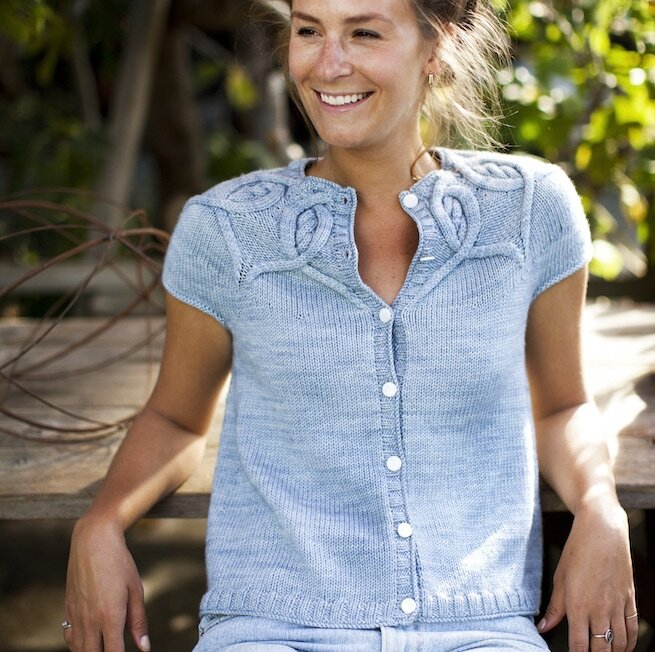
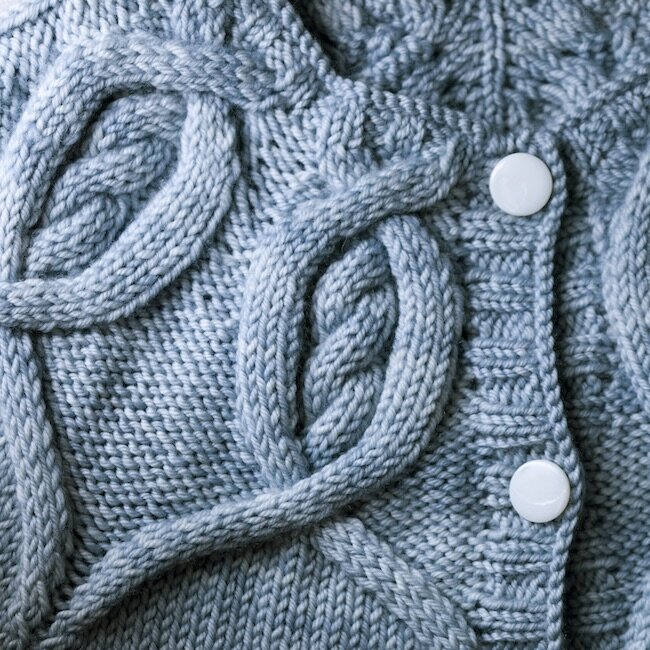
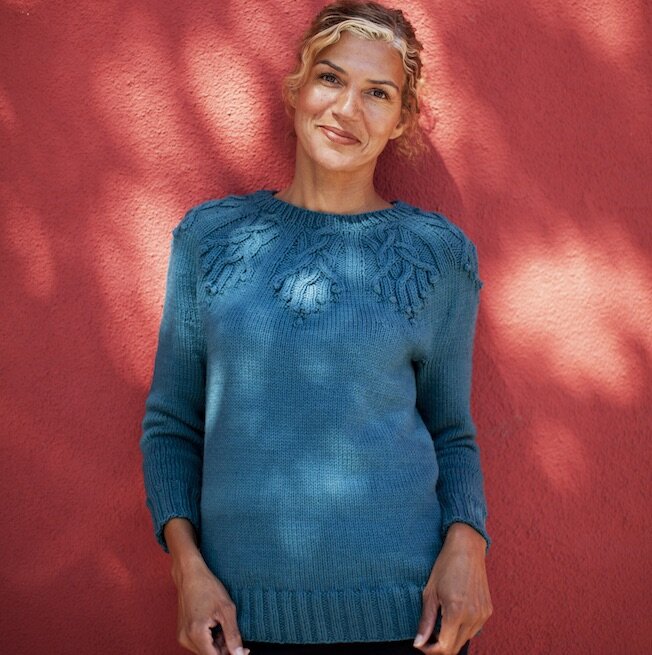
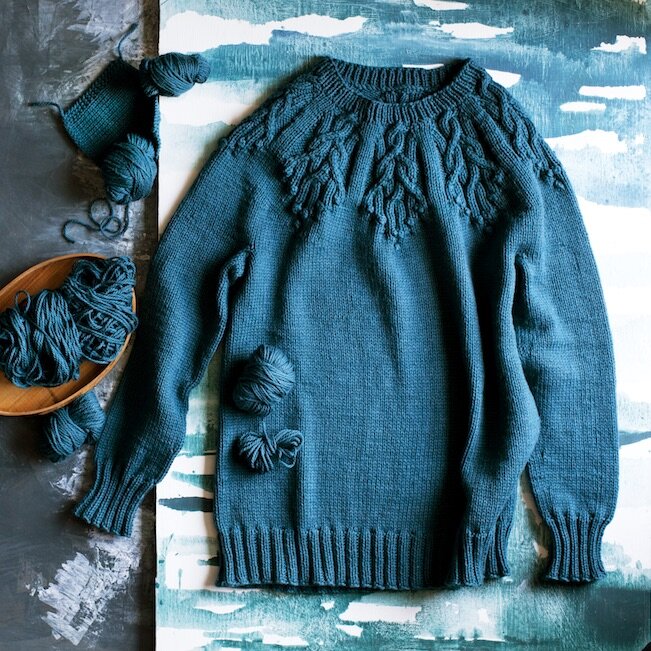
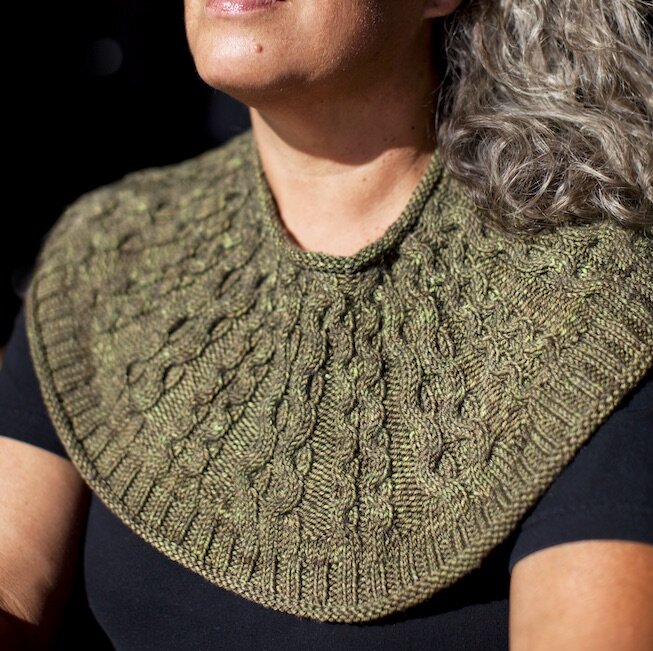

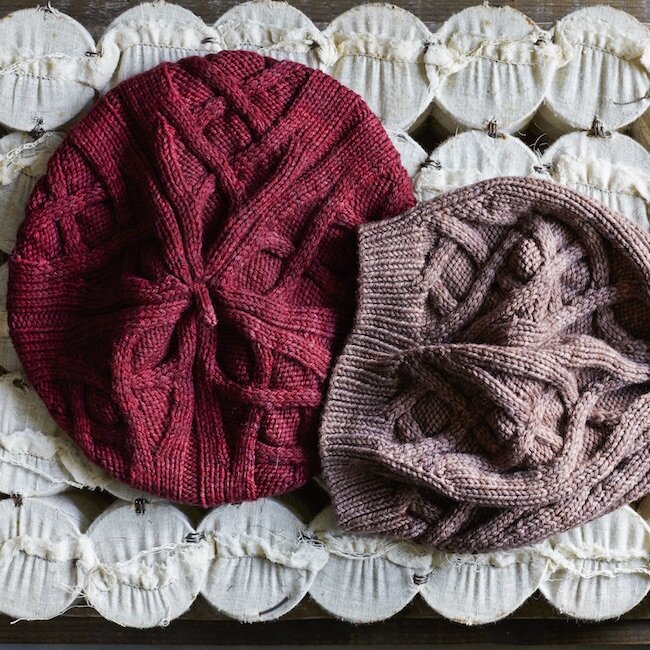
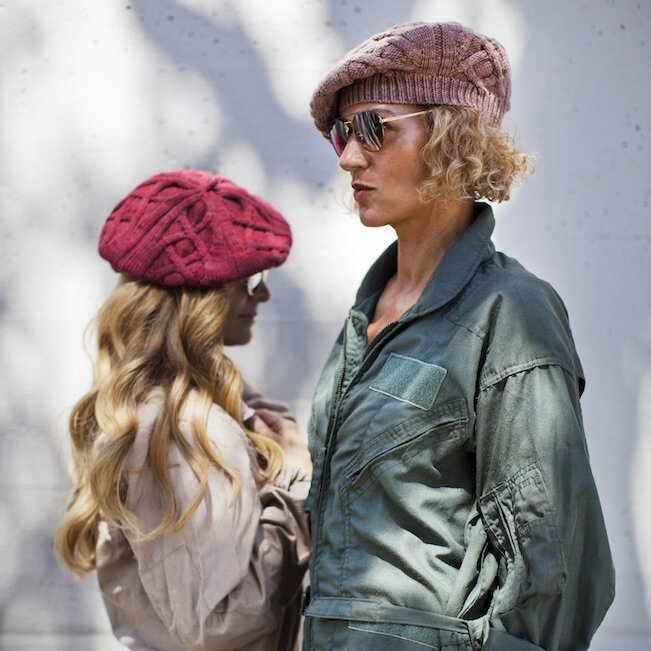
MDK Field Guide No. 9: Revolution
For more than 30 years, Norah Gaughan has set our minds awhirl. She is a true revolutionary—a genius of construction, a master of cables, and a fearless innovator. These four designs are an extraordinary chance to play in Norah’s world.
Norah Gaughan’s inspiration is revolution, in all its forms. The twists of a tree, the ironwork of the Eiffel Tower, a curl of calligraphy.
Three of these cable motifs are interchangeable, making it possible to mix and match pattern and garment as you like. Freedom to choose—such a Norah Gaughan idea.
(Note: all cable directions are given in both written-out and charted format.)
Calligraphy Cardigan:
With its short sleeves, the Calligraphy Cardigan gives us a new way of thinking about the garments we make. Freedom from long sleeves means we can wear this cardigan with a T-shirt, long sleeved or short, or button it up and wear it as is.
The sculptural yoke shows us cable innovator Norah Gaughan playing with circles and curves, creating a yoke that looks as much like a calligraphy doodle as a knitting pattern. The scale is big—a juicy, dimensional design that is probably not like any cable you’ve worked.
Liberty Tree Pullover:
A tree makes for a beautiful cable design. In designing this classic, body-skimming pullover, Norah was thinking about Boston’s famed Liberty Tree, the location of the first public protest against the British government’s Stamp Act in 1765. The cable’s branches intertwine, then fan out at the edge of the yoke, tipped in bobbles that are not too bobbly. They are just bobbly enough.
Elaine’s Capelet:
We had a bit of a time classifying this garment. Is it a cowl? A ruff? A neck napkin? It’s long enough, and stylish enough, that we settled on capelet. Whatever you call it, it’s just the thing to wear under a coat, for warmth without bulk. It’s a versatile addition to any wardrobe, and a gift that is sure to fit.
We proudly present the world’s first yoke sweater that is all yoke and no sweater. The yoke is the fun part of knitting a yoke sweater, especially so in this case, with pairs of cables that undulate instead of twist; they are easy to work but out of the ordinary.
Ironworks Beret:
In this stylish topper, Norah brings us the Industrial Revolution in hat form. It’s delightful how clearly Norah’s cables evoke the lattice girders of the Eiffel Tower; they stand separately at the brim, and join together elegantly at the top. The chart is simplicity itself, and Norah has done the knitter the kindness of shaping the beret from the bottom up, beginning with a cast-on of many stitches (hereby avoiding fiddling with a few twisty stitches at the start).
There's a bit of a back story to the name of these guides...
The two American women, Kay Gardiner and Ann Shayne, who produce these guides run a company now known as Modern Daily Knitting, but up until a month ago the company was called Mason-Dixon Knitting. Ann and Kay were originally pen pals living in Nashville and New York respectively. They chose the name, it seems, to reflect that fact that one lived in the south and the other in the north of the USA.
I confess when I first ordered these guides in June 2020, just after they had changed the company name, I didn't realise the significance of the original name. But comments I saw online made me do a bit of homework. From Wikipedia I discovered that:
The Mason–Dixon line is a demarcation line between four U.S. states, forming part of the borders of Pennsylvania, Maryland, Delaware, and West Virginia (part of Virginia until 1863). It was surveyed between 1763 and 1767 by Charles Mason and Jeremiah Dixon in the resolution of a border dispute involving Maryland, Pennsylvania, and Delaware in Colonial America. It later became informally known as the border between the free (Northern) states and the slave (Southern) states. The Virginia portion was the northern border of the Confederacy. It came into use during the debate around the Missouri Compromise of 1820, when the boundary between slave and free states was an issue. It is still used today in the figurative sense of a line that separates the North and South politically and socially.
Having read this, I can understand the impetus for change and appreciate their choosing to act on it. My stock, however, was printed before the change took place and still carries the old company name. I have added this explanation to the website so that customers are aware of the situation.
